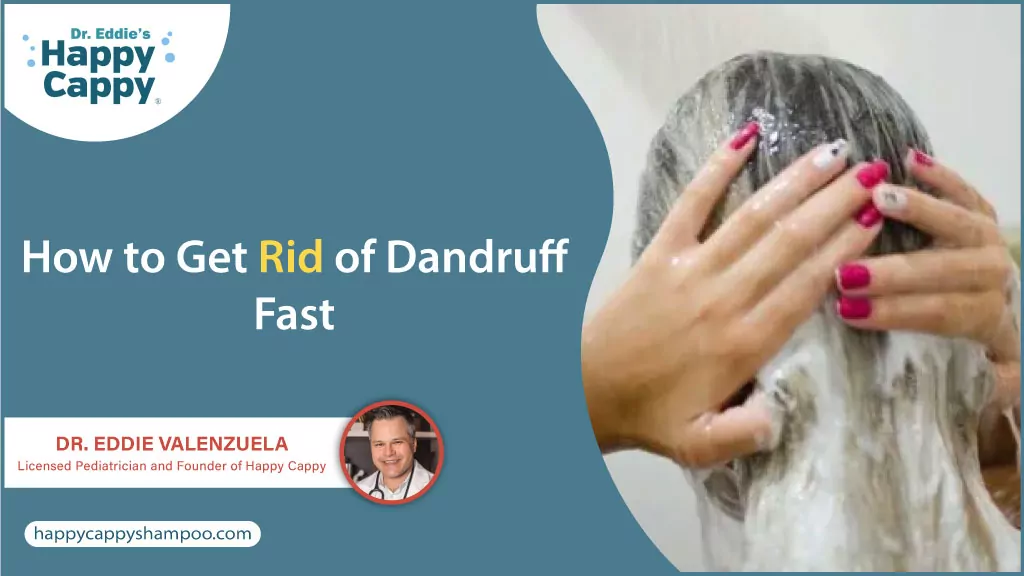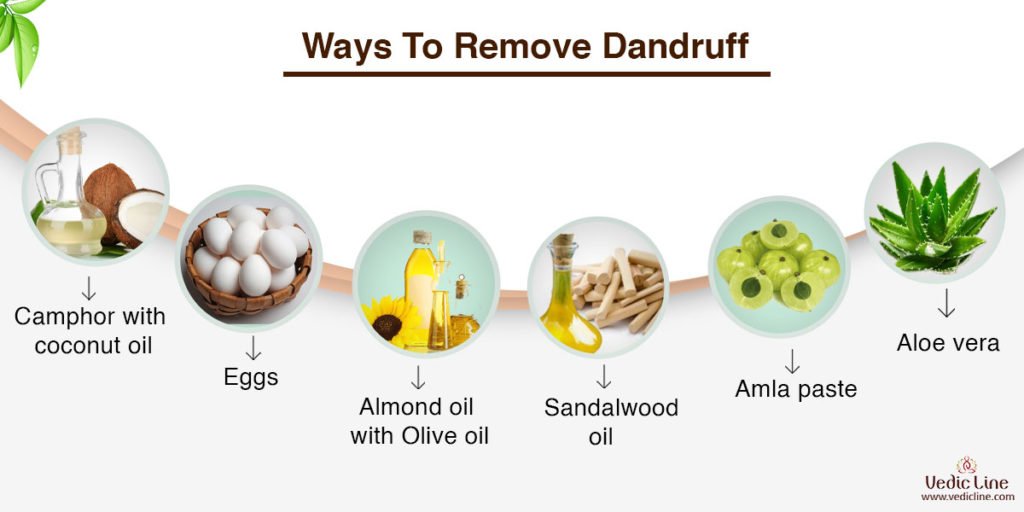Introduction
Dandruff is one of the most common and embarrassing scalp conditions. It shows up as tiny white or yellow flakes that fall from the scalp, often causing itching and discomfort. While it’s not a serious medical problem, dandruff can make you feel self-conscious and frustrated — especially when it doesn’t go away despite trying different products.
The truth is, dandruff can have several causes: excess oil, dryness, fungal overgrowth, irritation, or even stress. That’s why no single solution works for everyone.
The good news? You can get rid of dandruff quickly and safely with the right combination of treatment, scalp care, and habits. In this article, you’ll learn what causes dandruff, the best shampoos and home remedies that actually work, expert-approved care tips, and how to prevent dandruff from coming back — so you can enjoy a clean, healthy, and confident scalp again.

What Is Dandruff and Why Does It Happen?
Dandruff occurs when dead skin cells shed too quickly from the scalp’s surface. Normally, this renewal process takes about a month, but for people with dandruff, it happens in just a few days. The result? Visible flakes, itchiness, and sometimes redness or irritation.
Types of Dandruff
- Dry dandruff: Small, white, and powder-like flakes that fall easily. Usually linked to a dry scalp or cold weather.
- Oily dandruff: Larger, yellowish flakes that stick to the scalp. Often associated with excess sebum and fungal activity.
Common Causes
- Fungal overgrowth (Malassezia): A natural scalp yeast that multiplies excessively and triggers irritation.
- Excess oil production: Creates a perfect environment for fungal growth.
- Dryness: Leads to flaking and tightness on the scalp.
- Product irritation: Harsh shampoos, sprays, and gels can disrupt the scalp’s balance.
- Stress: Weakens the immune system, making dandruff worse.
- Poor scalp hygiene or irregular washing: Allows buildup of oils and dead skin cells.
- Weather changes: Cold, dry air or humidity can worsen symptoms.
Understanding why dandruff occurs is key to choosing the right treatment and keeping it from returning.
Read More: Dandruff Treatment and Home Remedies
Step-by-Step: How to Get Rid of Dandruff
Dandruff control isn’t about a single miracle product — it’s about consistency, proper scalp care, and lifestyle adjustments.
1. Use an Effective Anti-Dandruff Shampoo
Your first line of defense is a medicated shampoo designed to target dandruff’s root causes. Look for one containing proven active ingredients such as:
- Zinc pyrithione: Fights fungus and reduces itching.
- Ketoconazole: A strong antifungal that works for stubborn cases.
- Selenium sulfide: Slows cell turnover and controls oil.
- Salicylic acid: Helps remove dead skin cells and flaking.
- Coal tar: Reduces inflammation and severe scaling.
How to use it properly:
- Wet your hair with lukewarm (not hot) water.
- Apply the shampoo directly to your scalp — not just your hair.
- Massage gently for 2–3 minutes.
- Let it sit for another few minutes before rinsing thoroughly.
- Use 2–3 times per week until symptoms improve, then reduce to maintenance once weekly.
If your current shampoo stops working, alternate between two different formulas for better results. Consistency matters more than frequency.

2. Try Natural Home Remedies
Home remedies can complement your shampoo and soothe your scalp naturally. While not as strong as medicated treatments, they can help maintain balance and comfort.
Tea tree oil:
Has antifungal and antibacterial properties. Mix a few drops with your regular shampoo or a carrier oil like coconut oil.
Coconut oil:
Deeply hydrates dry scalps and may help fight fungal activity. Apply a small amount to your scalp, leave for 20–30 minutes, then wash thoroughly.
Aloe vera gel:
Soothes irritation and reduces inflammation. Use pure aloe vera directly on your scalp twice a week.
Apple cider vinegar:
Balances pH levels and removes product buildup. Mix equal parts vinegar and water, apply after washing, let sit for a few minutes, then rinse.
Baking soda:
Acts as a gentle exfoliant to remove dead skin. Use sparingly — once a week at most — to avoid dryness.
Crushed aspirin:
Contains salicylic acid that helps loosen flakes. Crush two tablets, mix with shampoo, and apply directly to your scalp.
Tip: Always do a patch test before applying natural remedies to avoid irritation.
3. Improve Your Scalp Care Routine
Simple lifestyle changes can make a big difference in reducing dandruff and preventing it from returning.
- Wash your hair regularly based on your scalp type — oily scalps may need daily washing; dry scalps can go 2–3 days between washes.
- Avoid hot water — it strips natural oils and dries the skin. Use lukewarm water instead.
- Rinse thoroughly after shampooing and conditioning.
- Don’t apply conditioner to the scalp — only to mid-lengths and ends.
- Avoid sleeping with wet hair; moisture encourages fungal growth.
- Limit the use of gels, sprays, and styling products that can irritate the scalp.
- Clean your hairbrush regularly.
- Change pillowcases often to prevent oil and bacteria buildup.
- Eat a balanced diet rich in vitamins, zinc, and omega-3s.
- Manage stress through exercise, meditation, or hobbies.
A healthy scalp routine is the foundation of dandruff prevention.

4. When to See a Dermatologist
If dandruff doesn’t improve after four to six weeks of consistent treatment, or if your scalp becomes red, sore, or starts shedding hair, it’s time to see a dermatologist.
You might be dealing with a more serious condition, such as seborrheic dermatitis or psoriasis, which require prescription treatments. A dermatologist may recommend stronger antifungal shampoos, topical steroids, or medicated creams to reduce inflammation.
Never ignore persistent symptoms — professional evaluation ensures accurate diagnosis and faster relief.
Common Mistakes That Make Dandruff Worse
Even when using the right products, small mistakes can stop you from seeing results. Avoid these common dandruff triggers:
- Using very hot water: It dries out and irritates the scalp.
- Switching shampoos too often: Doesn’t give ingredients enough time to work.
- Applying conditioner to your roots: Leads to oil buildup and flakes.
- Wearing tight hats or helmets for long periods: Prevents scalp ventilation.
- Not rinsing shampoo properly: Leaves residues that cause irritation.
- Scratching your scalp: Can cause tiny wounds and worsen flaking.
- Poor diet: Deficiency in zinc, vitamin B, or healthy fats can trigger dandruff.
Correcting these habits is essential for long-term dandruff control.

How to Prevent Dandruff from Coming Back
Once you’ve cleared dandruff, maintaining a healthy scalp routine will keep it from returning.
- Stick to a mild, pH-balanced shampoo for maintenance.
- Wash your hair consistently to avoid oil and skin buildup.
- Moisturize your scalp with natural oils if it tends to be dry.
- Massage your scalp regularly to boost blood flow.
- Avoid excessive product buildup from gels, sprays, or leave-ins.
- Eat plenty of fruits, vegetables, and omega-3-rich foods.
- Stay hydrated and manage stress effectively.
- Limit direct sun exposure or wear a hat in harsh sunlight.
Consistency is what turns short-term results into lasting scalp health.
Read More: Qué tomar para el dolor de muela muy fuerte
Conclusion
Dandruff may be annoying, but it’s completely manageable with the right approach. By combining an effective anti-dandruff shampoo, simple natural remedies, and healthy scalp habits, you can eliminate flakes and restore confidence in your hair.
Remember, there’s no instant cure — it’s all about consistency. Give treatments time to work, and be gentle with your scalp. If you’ve tried multiple products and nothing helps, a dermatologist can identify the root cause and prescribe targeted treatments.
With patience and proper care, anyone can achieve a clean, flake-free scalp and shiny, healthy hair. The key is listening to your scalp’s needs, maintaining balance, and preventing buildup or irritation. Dandruff doesn’t define you — taking care of your scalp does.
FAQs
1. How can I remove dandruff naturally?
Use home remedies like aloe vera, tea tree oil, apple cider vinegar, or coconut oil. These ingredients balance the scalp and reduce fungal growth.
2. Which shampoo works best for dandruff?
Look for shampoos with active ingredients such as ketoconazole, zinc pyrithione, salicylic acid, or selenium sulfide. Each targets different dandruff causes.
3. How often should I wash my hair if I have dandruff?
If your scalp is oily, wash every day or every other day. For dry scalps, 2–3 times a week is enough. Regular washing helps remove oil and buildup.
4. Can stress cause dandruff?
Yes. Stress can disrupt hormonal balance and immune response, triggering scalp irritation and flaking. Managing stress helps keep dandruff under control.
5. Why won’t my dandruff go away?
Persistent dandruff may be due to dermatitis, psoriasis, or resistance to your current shampoo. If it doesn’t improve after a month, consult a dermatologist.